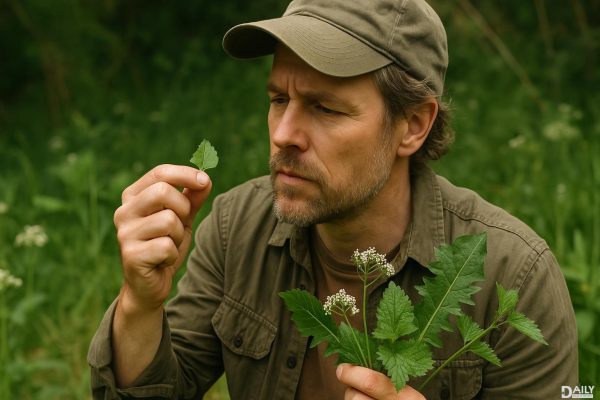When you're out in the wild or just looking to add some free, nutrient-packed greens to your diet, nature's got your back. There are plenty of common plants—many of them considered weeds—that are not only edible but packed with vitamins, minerals, and even protein. Forget spending big bucks on organic kale; some of the most nutritious greens are growing right under your feet. Let’s dive into five easy-to-identify plants that can give your meals a serious health upgrade.

Yeah, those yellow-flowered nuisances that take over your lawn every spring? They’re actually one of the most nutrient-dense plants you can eat. Every part of the dandelion—roots, leaves, and flowers—is edible. The leaves are loaded with vitamins A, C, and K, plus iron, calcium, and potassium. They’ve got a slightly bitter taste, kind of like arugula, but they’re killer in salads or sautéed with garlic. The roots can be roasted and ground into a coffee substitute, and the flowers? Toss ’em in batter and fry ’em up for a fun, crunchy snack. Just make sure you’re picking them from a spot that hasn’t been sprayed with chemicals.
This low-growing succulent might pop up in your garden or sidewalk cracks, but don’t pull it—eat it! Purslane is one of the few plants that’s rich in omega-3 fatty acids, the same healthy fats found in fish. It’s also packed with magnesium, calcium, and antioxidants. The leaves and stems have a mild, lemony flavor and a juicy crunch, making them perfect for salads, stir-fries, or even blended into smoothies. If you’ve ever weeded this out of your garden, you’ve been throwing away a nutritional goldmine.
Often called "wild spinach," lamb’s quarters is a leafy green that grows like crazy in fields, gardens, and disturbed soil. It’s loaded with protein, fiber, and vitamins A and C—way more than regular spinach, actually. The leaves are tender and mild, great raw or cooked. You can use them just like spinach: sautéed, steamed, or blended into pesto. Just be sure to avoid areas near roadsides where pollution might have settled on the leaves.
No, not the starchy tropical fruit—this is the broadleaf weed that thrives in lawns and sidewalks. Plantain leaves are rich in vitamins A and C, calcium, and compounds that help with inflammation. They’ve been used for centuries as a natural remedy for wounds and bug bites (just chew up a leaf and apply it—gross but effective). The young leaves are tender enough for salads, while older leaves can be boiled or steamed like collard greens. Bonus: The seeds are edible too and can be used like psyllium husk for fiber.
This delicate, vine-like plant often gets overlooked, but it’s a nutritional powerhouse. Chickweed is high in vitamins C, B, and iron, and it has a mild, fresh taste—like a cross between lettuce and spinach. It’s great raw in salads, blended into soups, or even as a garnish. Some people swear by chickweed tea for digestion. Just be careful not to confuse it with look-alikes; true chickweed has a single line of fine hairs running along its stem.
Next time you’re outside, take a closer look at what’s growing around you. These common plants aren’t just free food—they’re some of the most nutrient-rich greens you can find. Just remember: Always positively identify any plant before eating it, avoid areas treated with pesticides, and wash everything thoroughly. Happy foraging!
























